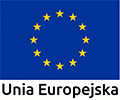On 2nd August 1943, on Monday afternoon a revolt of prisoners at Treblinka Extermination Camp began. Since spring 1943, by order of Heinrich Himmler the corpses of the murdered prisoners were being successively burned. Transports with the deported Jews were arriving less frequently. The prisoners working in Kommandos at Treblinka Extermination Camp realised they are becoming useless. Being useless in the extermination camp meant death.
On the day of the uprising there were 840 prisoners in Treblinka II, some of which did not participate in the uprising at all – their will to live has been taken away. It is assumed that about 200 prisoners managed to get out of the camp, at most 100 people survived the war.
On 2nd August 2019 at the site of Treblinka Extermination Camp, took place the commemoration of the 76. anniversary of the revolt at Treblinka Extermination Camp. The event was organised by the Emanuel Ringelblum Jewish Historical Institute. Representatives of state authorities, local government and the church as well as Jewish community, cultural institutions and diplomatic corps took part in the commemorative events. The guest of honor – Ada Krystyna Willenberg – Samuel Willenberg’s widow attended the commemoration with her family and friends.
The ceremony was opened by Prof. Paweł Śpiewak, Head of the Jewish Historical Institute, who reminded guests that they are gathered at the biggest cemetery of Jewish people in Poland. A place where about 900 000 people have died, names of which remain unknown. Prof. Śpiewak recalled Abraham Lewin, a teacher of Hebrew at Jehudyjah School in Warsaw, a member of The Underground Archive of the Warsaw Ghetto, so-called Ringelblum Archive. Lewin was first to gather information about the Treblinka Extermination Camp.
Marek Zając who was a host of the commemoration read fragments from Abraham Lewin’s Diary.
A letter from the President of the Republic of Poland, Andrzej Duda, was read by Secretary of State in the Chancellery of the President of the Republic of Poland – Wojciech Kolarski.
Today’s commemoration is dedicated to those who after surviving unimaginable things, put up a fight, not for the right to live, for the Nazis would never allow them to have it but for the right to do die by their own choice. We honor the memory of those who died in an unfair fight and those few who managed to survive and live long enough to regain freedom. For decades they were the ones to carry a memory about what happened here, in Treblinka. Memory about millions of Jews who became victims of the Holocaust brought to our land by the invaders and occupiers.
A letter from the Prime Minister Mateusz Morawiecki was read by the Head of Mazovia Voivodeship Office branch in Siedlce – Anna Kaszuba.
A letter from Deputy Prime Minister, Minister of Culture and National Heritage was read by the director of the Museum Treblinka, Edward Kopówka.
I would like to offer my deepest honor to those who survived the hell of German Nazi concentration camps and extermination camps as well as the members of families, who together with them experienced the trauma as a result of the camps.
Professor Paweł Śpiewak and Mateusz Pigoń, Director of Culture Department in Embassy of Israel read a letter from Prime Minister of Israel, Benjamin Natanyahu.
Małgorzat Naimska, Assistant Director of Culture Office of Warsaw City Hall read a letter from the President of Warsaw, Rafał Trzaskowski.
The last one to speak was Ada Krystyna Willenberg.
At this place on 2nd August the prisoners organised a revolt. To start a rebellion in ghetto is a huge act of heroism, but doing it in the camp is even bigger. In ghettos people knew each other, some of them were members of Zionist organizations or communistic organizations, they went together to school, they knew each other. In Treblinka everyone were strangers. (…) There were no weapons in Treblinka. In Treblinka the prisoners did not know each other. My husband used to tell me that until the last moments he did not even know about the underground in Treblinka or their plans. But they were making plans for months.(…)
The commemoration was ended with prayers of Jewish and Christian priests. For the murdered victims prayed Stas Wojciechowicz, Rabbi of Jewish Community, rabbi Oriel Zaretsky, priest Paweł Szwedo, parish priest of the Evangelic-Augsburg Church in Węgrów and priest Józef Poskrobko of parish in Prostyń.
At the end of ceremonies guests paid their respects to the murdered by putting flower wreaths and lighting candles in front of the monument at the site of Extermination Camp.
After the ceremonies at the main monument, at the museum building a temporary exhibition ‘Don’t they know that they are going to die?’ was opened. This exhibition presents a present-day photographs of Treblinka II taken by American photograph Alan Metnick. The commentaries to the photos are quotes from Emanuel Ringelblum’s writings, which show the Warsaw ghetto’s atmosphere when the deportations to Treblinka began. The exhibition prepared by the Jewish Historical Institute for Museum Treblinka is a part of commemoration of 75th anniversary of Emanuel Ringelblum’s death. The exhibition will be available for visitors till the end of this year.





